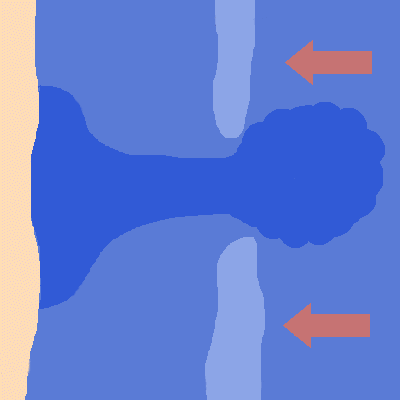
Outgoing ocean currents – called rip currents – are the #1 danger for people at beaches. More than 100 people die each year after getting caught in them. Typical flow is 1-2 feet per second (0.5 meters per second), but they can flow faster – faster than a human can swim. Learn what to do if you get caught in a rip current, in this video. And share with your kids! Brought to you by the National Oceanic and Atmospheric Administration (NOAA).
Some main points about rip currents – see video for more information:
– Observe signs of rip currents like breaks in the waves, debris being carried out to sea, and others (see video).
– Don’t try to fight a rip current. Swim sideways, along the line of the beach, and then angle back toward the beach.
– If you see someone caught in a rip current, call 911 or a lifeguard – don’t try to rescue them yourself.
Learn more about rip currents from NOAA.
By the way, you’ll often hear rip currents called simply a rip, or you might hear them called by the misnomer rip tide. They really have nothing to do with tides.

Here’s how rip currents form. Breakers cross sand bars off the shore, and the water travels back to sea through the gap in the sand bars. Via Wikimedia Commons.
Bottom line: Rip currents can flow faster than humans can swim. This video explains what to do if you get caught in one.
Tides and the pull of the sun and moon
Source:
https://earthsky.org/earth/going-to-the-beach-this-summer-you-need-to-watch-this-video